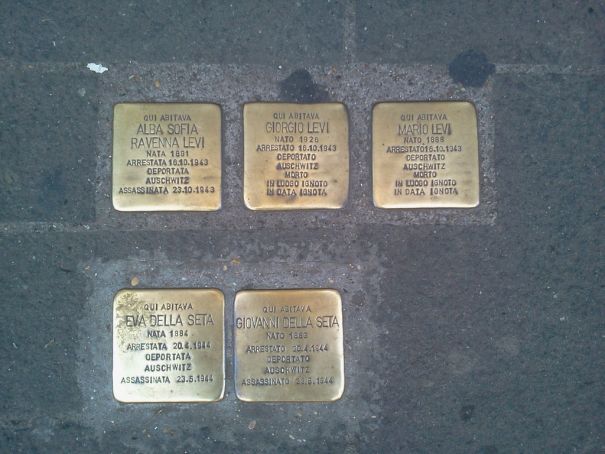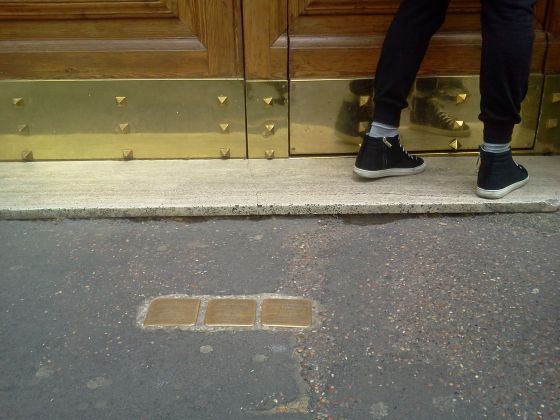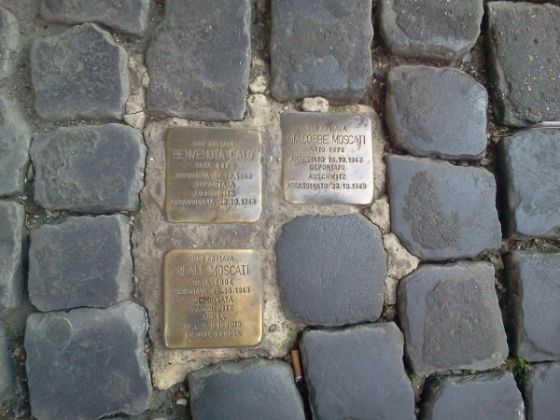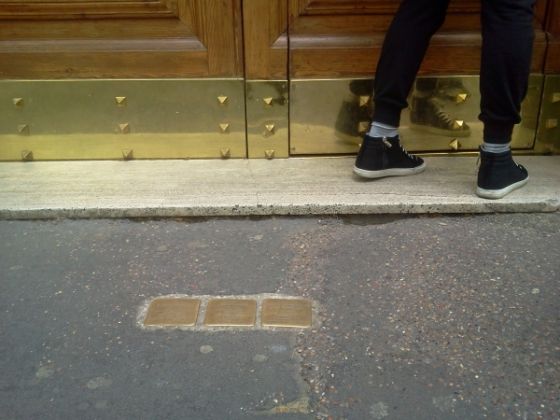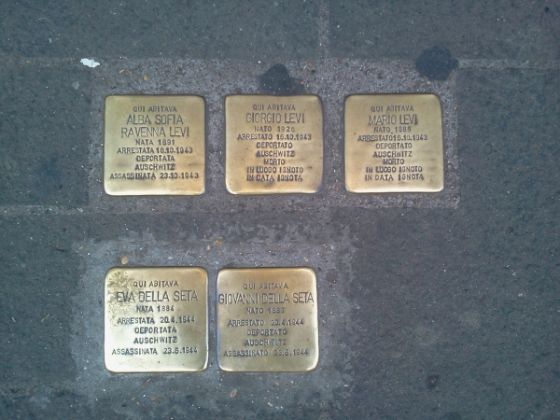The story behind Rome's brass cobblestones.
While a group of young school children kick a soccer ball around in the Jewish ghetto, their ball bounces over the sampietrini but also on top of some brass cobblestones that have recently become ubiquitous in this neighbourhood and in other parts of Rome. Another family circles around the children, pushing an elderly relative in a wheelchair whose wheels plough over the plaques. The top of the brass cobblestone is engraved and reads, “Here lived…..”
These cobblestone-sized memorials are referred to as stolpersteine in German, or literally translated “stumbling stones” and are installed outside the last chosen place of residence of victims of the Holocaust.
There are over a dozen in the Jewish ghetto and they are now part of the fabric of the neighbourhood, just as the victims once were, who themselves played soccer or strolled with their relatives over the same spot. Each plaque is detailed with the victim’s first and last name, date of birth, date and place of deportation, and date of death in a Nazi extermination camp. There are currently almost 200 stumbling stones installed in nine districts of Rome including Trastevere, Prati, Campo de' Fiori, Flaminio, S. Pietro, Tiburtina, Prenestino, Appio Latino and Aurelio. A new tranche of stones is laid in Rome every January.
The stolperstein memorial was designed by Berlin artist Gunter Demnig. On 16 December 1992 Demnig marked the 50th anniversary of Himmler's order to deport Sinti and Roma to extermination camps by engraving the decree’s first sentence onto a stone which he laid in front of Cologne’s town hall. Demnig's idea developed further after meeting a war-era Cologne resident who had no memory of Sinti or Roma having ever lived in her neighbourhood. Despite encountering difficulties in obtaining official support in the early stages of the project, within a few years Demnig was authorised by Cologne to install more stolpersteine and now there are thousands of these memorials across Germany.
Today more than 27,000 of these brass cobblestones have been installed throughout eight European countries: Croatia, Czech Republic, France, Germany, Hungary, Italy, Norway and the Netherlands, as well as Russia. Their installation only began in Rome in 2010, to become part of what Adachaira Zevi, manager of the Rome branch of the project, defines as “circuits of memory.”
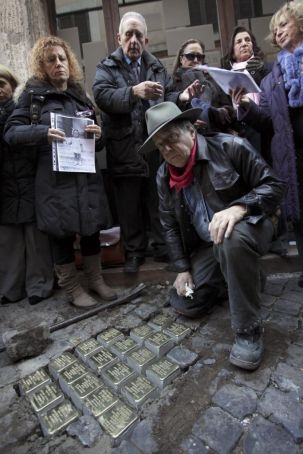
The memorial stones are commissioned by family members or often residents of the building from where victims were deported, a powerful reminder of a tragedy in the exact place it occurred, by people who were affected directly. The reactions to the commemorative effort have been mixed: to some they are unnoticeable, and to others unavoidable.
Although the installations are discreet, a few were removed illegally from the Jewish ghetto and Monti disticts in 2012. The memorial for Don Pietro Pappagallo, the Resistance priest killed in the Fosse Ardeatine massacre in 1944 and whose character featured in Rossellini's movie Open City, was stolen from outside his former home on Via Urbana, not once but twice.
The installation is part of a larger effort in the capital to represent Italy’s sympathy and recover from its role in the earlier stages of world war two, on the 70th anniversary of Rome’s liberation.
Author and docent Roy Doliner believes the brass cobblestones have a different effect to the numerous wall plaques around the city because you stumble over them (often literally) and by doing so, open your eyes.
On a walk through the city, Doliner points to several commemorative plaques honouring Holocaust victims that were installed more than a decade after the end of the war.
A particularly agonising plaque to read is on the wall of a children’s day school near Via Portico d'Ottavia in the Jewish ghetto that states, “In perpetual memory of 112 students from this school killed in the Nazi extermination camps.”
Another plaque that was installed in 1984 on the wall of a building on Via della Lungara in Trastevere reads, “On 16 October 1943 entire Jewish Roman families were ripped from their homes and brought to this place and then deported to concentration camps. Of more than 2,000 people, only 16 survived.”
The dawn raid in the ghetto around the synagogue involved the rounding up of 1,016 Roman Jews, including 200 children, who were then taken to the Collegio Militare building at Palazzo Salviati on Via della Lungara 82-83. Two days later they were sent to Auschwitz on a sealed train from Tiburtina station. Only six of them were to return to Rome, according to figures released by the city hall on the 70th anniversary of the deportation in 2013.
That anniversary was marked with a ceremony at Tiburtina station in the presence of Rome's mayor Ignazio Marino and the president of the city's Jewish community Riccardo Pacifici. A plaque honouring the victims who were loaded on trains and deported to labour and concentration camps was reinstalled on platform one after its temporary removal during recent renovation works.
Another district in Rome to suffer hugely during world war two was Quadraro ̶ today's Cinecittà off Via Tuscolana to the south-east of Rome ̶ home to partisans and opponents of the fascist regime. There one can find a sculpture in the park recalling 17 April 1944 when the Germans raided the neighbourhood and took more than 700 men to labour camps. For Rome, in terms of size, the so-called Walfisch operation was second only to the raid at the ghetto six months earlier.
The recent installation of the stumbling stones throughout the city is designed to tell the story of the Holocaust one tragedy at a time, each adult and child victim commemorated one by one in front of his or her home.
Whoever wishes to dedicate a stumbling block to a friend or relative deported can do so by visiting the Casa della Memoria e della Storia in Trastevere, or download and compile the form online.
Theresa Potenza
This article first appeared in the November 2014 edition of Wanted in Rome.



